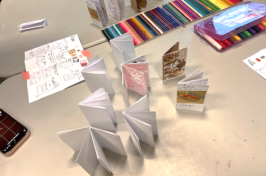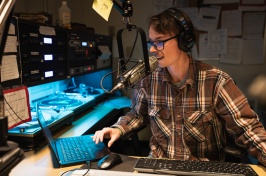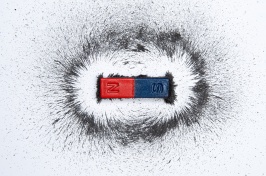UNH Instruments Rocket into Space to Help Safeguard Impact of Space Weather

A team of UNH researchers, technicians and students designed and built the IMAP-Lo which will help scientists better understand the impact of space weather.
DURHAM, N.H.—After years in the making, instrumentation designed and built by researchers, engineers and students from the University of New Hampshire (UNH) blasted off on a Space X Falcon 9 rocket from Kennedy Space Center in Florida. The rocket is headed toward the sun as a part of NASA’s latest scientific mission to better understand the impact of space weather, cosmic radiation and their impacts on Earth.
The IMAP (Interstellar Mapping and Acceleration Probe) mission will study the sun’s influence on the solar system and how it contributes to harsh space weather that can be harmful to both humans and equipment during space travel – like future expeditions to Mars. It can also cause issues with communications, GPS and other technology on Earth, including power grids.
“This is an exciting step in our space weather readiness and understanding how the Sun controls the boundaries of our solar system and regulates the space environment where we send astronauts,” said Nathan Schwadron, professor of physics, deputy principal investigator for IMAP and the lead for IMAP-Lo instrument constructed at UNH’s Space Science Center. “The goal is to map the heliosphere — a bubble surrounding and protecting our solar system and makes our planet inhabitable — which regulates galactic cosmic rays which can pose radiation exposure risks for humans in space, can damage space instruments and even influence the Earth’s atmosphere.”
More than 50 UNH technicians contributed to the construction of the IMAP-LO which will be among 10 science instruments on the IMAP spacecraft. It will chart the boundary of the heliosphere - providing imaging by measuring neutral atomic particles streaming inward from the boundary of our solar system and beyond.
Aboard the rocket are two other spacecraft, including NOAA’s SWFO-L1 (Space Weather Follow On-Lagrange 1) mission, a first-of-its-kind, full-time operational space weather observatory. UNH professor emeritus Roy Torbert served as the principal investigator for the Southwest Research Institute (SwRI) for the mission. He led a team based at UNH’s Institute for the Study of Earth, Oceans, and Space that developed an instrument to improve space weather monitoring and forecasting capabilities. Known as a magnetometer, it is part of a suite of instruments which will measure storms created by the solar wind — a continuous flow of charged particles flowing from the sun — which can also affect such things as satellites and technology on Earth.
“The SWFO-MAG will allow NOAA and the scientific community at large to measure how the Earth’s magnetic field is impacted by the solar wind and help support NOAA’s mission for real-time observations in monitoring and forecasting space weather events allowing for more advanced warnings and early action to protect vital technology and infrastructure, in space and on Earth,” said Torbert.
This is the first time that two UNH space instruments associated with two different missions have launched on one rocket.
In the hours after launch, the IMAP and SWFO-L1 spacecrafts, as well as the one other spacecraft supporting a third mission (Carruthers Geocorona Observatory mission), will deploy from the rocket.
Over the next few months, the spacecrafts will make their way to their final destination — a location between Earth and the Sun, about a million miles from Earth, called Lagrange point 1 (L1). They should arrive by January and, once their instrument checkouts and calibrations are complete, begin their science missions to better understand and protect humanity from space weather.
VIDEO AND PHOTOS FOR DOWNLOAD:
Video:
IMAP-Lo being built at UNH
https://www.youtube.com/watch?v=FwLdlo4DwFE
Photos:
IMAP-LO instrument being built by UNH researchers, engineers and students
https://www.unh.edu/unhtoday/sites/default/files/rs77353_20230330-a7407535_lpr.jpg
https://www.unh.edu/unhtoday/sites/default/files/rs77363_20230330-a7407835_lpr.jpg
https://www.unh.edu/unhtoday/sites/default/files/rs77364_20230330-a7407687_lpr.jpg
https://www.unh.edu/unhtoday/sites/default/files/unh_imap-lo_20230804-_1jg2365.jpg
https://www.unh.edu/unhtoday/sites/default/files/unh_imap-lo_20230804-_1jg2370.jpg
IMAP-Lo team “selfie” during instrument installation.
To learn more about IMAP: https://www.nasa.gov/imap
To learn more about SWFO-L1: https://science.nasa.gov/mission/swfo-l1/
Latest News
-
December 4, 2025
-
November 26, 2025
-
November 6, 2025
-
November 5, 2025
-
October 24, 2025















































